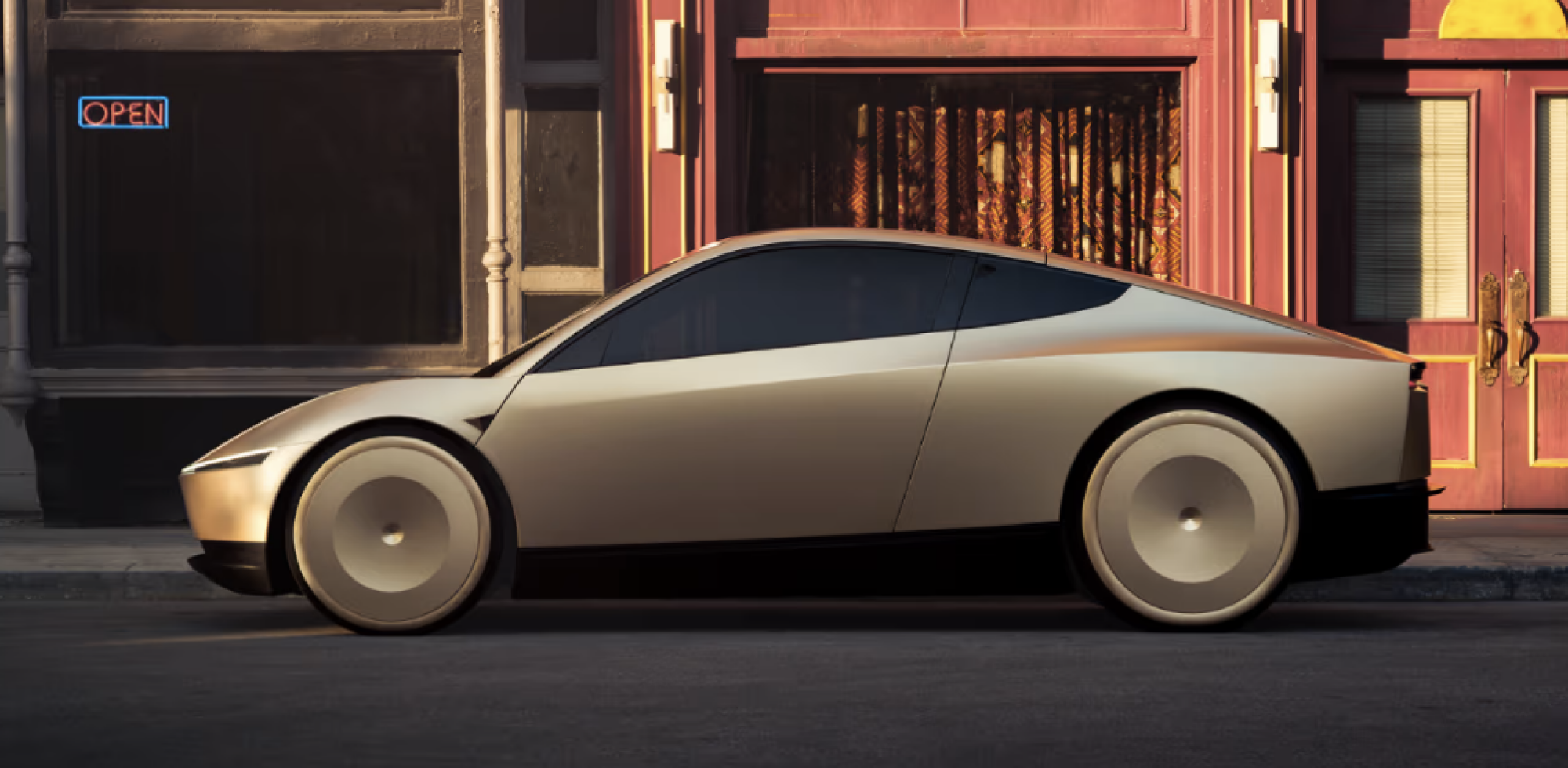Tesla’s robotaxi is finally a real thing, and it’s called Cybercab.
Unveiled by CEO Elon Musk at Tesla’s big “We, Robot” event at Warner Bros studios, the Cybercab is a futuristic-looking, fully autonomous electric vehicle that can ferry passengers around completely on its own.
At the start of the event, the Cybercab (or Robotaxi — the name isn’t entirely clear right now as both names were used throughout the event) actually took Musk through a short series of mock-up streets and onto the stage (with 20 other Cybercabs autonomously roaming around those same streets).
The Cybercab, as shown, isn’t meant to be driven. It doesn’t have a steering wheel, or pedals. It’s got two butterfly wing doors, letting the passengers in — and only the passengers, as the car does not need a driver.

Credit: Tesla
According to Musk, “you could fall asleep, and wake up at your destination.”
Inside, there’s a large display similar to those in today’s Tesla cars, and the whole idea is for the car to be like a nice little lounge in which you chill while the car does its thing.
The Cybercab also doesn’t have a charging plug; it will use wireless induction charging instead. Battery capacity, charging speed and other details weren’t mentioned during Tesla’s presentation.
As for the problems the Cybercab is meant to solve, Musk says traffic as it is today is slow, unsustainable, too expensive, and not safe enough. If most or all those cars on the streets were autonomous, “driving” would allegedly be ten times safer, cars would be cheaper, and they could actually make money for their owners while they sleep, by ferrying other passengers around, (robo)taxi-style.
The price for all this goodness if you were to buy one? About $30,000, said Musk.
We sort of knew most of this, as Musk has been talking about this as one of Tesla’s primary goals (a fleet of robotaxis) for years. And given Tesla’s (sometimes painfully slow) progress on its Full Self-Driving package, we know Tesla is trying hard to solve the autonomous driving problem. So the big question here is: When can we expect to see Cybercabs on the streets?
The answer is quite murky. According to Musk, Tesla plans to start fully autonomous, unsupervised FSD in Texas and California in 2025, with the Model 3 and the Model Y. Cybercab production should start in 2026, Musk said, but then immediately added that he tends to be “a little optimistic with time frames” and changed that timeframe to “before 2027.” And all of this unsupervised, autonomous driving business needs to be approved by regulators before it can happen, both in the U.S. and abroad.
If you read the fine print, that means not much has changed for Tesla: The company still plans to launch autonomous driving on existing cars first via its FSD package. The problem is that Musk has been talking about this for nearly a decade, and while FSD is in parts impressive, it’s not yet ready to be unleashed into the world as a fully autonomous, unsupervised driving package. It all boils down to whether Tesla can make this happen, how long will it take, and when regulators will put their stamp of approval on the whole idea.


